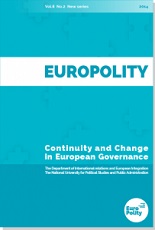POLISH PERSPECTIVES ON CEE-CHINA 16+1 COOPERATION: THE UNEXPECTED UKRAINIAN FACTOR
POLISH PERSPECTIVES ON CEE-CHINA 16+1 COOPERATION: THE UNEXPECTED UKRAINIAN FACTOR
Author(s): Rafał TuszyńskiSubject(s): Politics / Political Sciences
Published by: Scoala Nationala de Studii Politice si Administrative (SNSPA)
Keywords: CEE; China; EU; Poland; 16+1
Summary/Abstract: The initiation in Warsaw of the CEE-China cooperation (so called 16+1 format) in 2012 has aroused many hopes in participating countries, since many of them were cash-strapped after the global financial crisis and China offered credit lines as well as know-how in infrastructure building. At the beginning, Poland viewed 16+1 as a useful platform to prove its growing diplomatic clout in CEE because China claimed that Poland is a natural and real leader of the 16+1. As the 16+1 cooperation matured this format quickly showed a major drawback – China uses the diversity among the 16 CEE countries (e.g. EU and non-EU status) to promote its own interests (divide et impera). The Chinese strategy turned out to be particularly at odds with Polish foreign policy goals, since from Warsaw's point of view the unity of the EU at all fronts in the face of Russian aggression on Ukraine is of the utmost necessity. Moreover Polish diplomacy is becoming more and more sceptical of 16+1 because of the EU's pressure to toe the line of EU framework of cooperation with China. The absence of Polish PM Ewa Kopacz at the 16+1 Belgrade Summit in December 2014 may result in a change of Chinese attitude towards 16+1.
Journal: Europolity - Continuity and Change in European Governance
- Issue Year: 9/2015
- Issue No: 1
- Page Range: 189-220
- Page Count: 32

